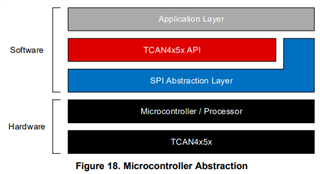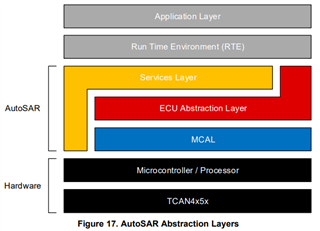Hello expert,
My customer would like to know below question from TCAN4550 and TCAN4550-Q1. May we know if you can help to answer it? Thanks!
- Will this two parts support ARM and x86 system? If yes, do we have driver for it?
- Will this two parts support Windows and Linux system? If yes, do we have driver for it?
- Will we provide API and test program?
- Will this two parts support CANopen and SAE J1939嗎?
Best regards,
Ann Lien




